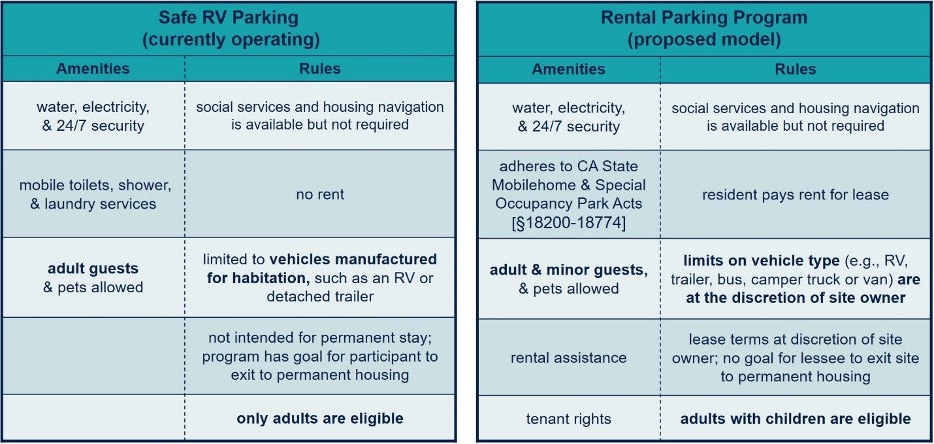Readers who live in the Bay Area or its surrounding environs have probably observed an increasing number of RVs parked in public areas. As homelessness in general has gotten worse over the past few years, vehicular homelessness—people living out of their cars, vans, or other motor vehicles—has become a more visible feature of the streets in many West Coast cities. (It has also left its stamp on popular culture through the Oscar-winning film Nomadland.)
Like any subpopulation of those experiencing homelessness, people experiencing vehicular homelessness have specific needs and characteristics that make some policy responses more effective than others. But compared to other subpopulations, this group’s needs and characteristics are not especially well understood. At the request of the City of Oakland, BHHI has produced a new report that sheds new light on Oakland residents who experience vehicular homelessness and how to help them.
Researchers Graham Pruss and Kelly Knight conducted in-depth interviews with 48 residents of “oversized” vehicles (such as RVs, buses, and detached trailers). Respondents were asked about Oakland’s safe RV parking program and about a “rental parking program" that was proposed by the researchers. The difference between these two programs is best summarized in the below figure; safe RV parking sites (which already exist in many cities) may be best thought of as transitional housing for homeless vehicle residents, whereas rental parking programs (which currently exist only in theory) operate more like a trailer park.

Key findings from the report include:
- Most of survey respondents became homeless while residing in Alameda County (which includes Oakland).
- They tended to prefer staying in their vehicles to giving them up for shelter or time-limited housing subsidies. They feared they would likely return to homelessness once the subsidies expired.
- On the other hand, most residents would trade vehicle residency for permanent housing, given the option.
Respondents also saw some barriers to entry into existing safe parking programs and responded positively to the rental parking proposal. The report concludes with recommendations that include expanding safe parking and exploring the feasibility of implementing a rental parking program.
I highly recommend this report to anyone who wants to better understand an oft-misunderstood subpopulation of unhoused people. You can read it here.